Anya Karmanova & Julia Rodionova – Moscow, Russia
Interview by Josiah Titus | Photos by Eilon Paz
ry and imagine how many records there are in this world. Think of all the places they exist. Record Shops, swap meets, thrift stores, yard sales. Listening rooms, living rooms. Boxes gathering dust in attics and water damage in basements, buried in the backs of closets and storage units. LPs in tote bags and 45s in hard cases, mailers traveling by air. Decades of pressed wax, resting and turning over, recorded, released and collected everywhere.
Most of us will only ever see a small sliver of it all, hardly more than what our little corner of the world contains. We frequent our record shops and thrift stores, we know who’s who of the local collectors, and we stay up on what we know to look for online. Maybe we even get to travel now and then and hit up shops in other cities, or drive through other small towns. But in terms of what’s really out there, the sheer volume of what the world holds, we are left imagining.
Not so for the collectors we’re bringing you today. Anya Karmanova and Julia Rodionova can speak with authority to the vastness of the records that exist in this world. Their digging adventures have taken them over oceans and across continents, and their love and passion for music and all things records fosters community everywhere they go. For them, it’s about more than the grooves cut into wax. This is about friendship and heart.
Here at Dust & Grooves, we have the good fortune of featuring some of the world’s most interesting record collectors, but rarely do we have the unique pleasure of spotlighting a partnership like this. These seasoned collectors, DJs, radio show hosts and friends have stories to tell, and we are honored to be sitting down with them today.

Tell us about where this partnership started out and how you ended up with the moniker Javybz.
Anya: We met for the first time at the age of 14 in 2000. Looks like this year we can celebrate 20 years of friendship. We met that first time at our friend’s apartment, we were all there to get ready for a party like girls of this age do. I hardly remember this period, but I think we both were into the music and this fact brought us together. My father used to be a double bass and bass guitar player before becoming a lawyer, so jazz was always in our home. I was going to ballet school and contemporary dance school, and then I started listening to house and attending house dance classes.
But music in the sense of how we perceive it now came to our life later with the Cult Club. We first went there in 2003 and stayed there till 2014. Cult Club was a very special place where we got lost in music. This is where we played our first records, met wonderful people from all over the world; it changed our lives completely. I was studying law and supposed to be a lawyer, Julia was studying economics, but we both veered off track because of the music. I hung in there and worked as a lawyer for two years after graduating, but music won in the end.
Julia: We started going to the Cult Club, and there I think records got into our orbit. Even more than that, the whole new world of music opened up for us: artists, styles, genres, parties, the art of DJing, music’s ability to connect and unite people—we didn’t really know much about any of this before Cult Club, and we bonded over discovering it all, and eventually got into buying our own records.
It’s also where we had our first gig in 2006, and we had to give a name to a designer for a monthly Cult Club poster and book. Somehow very quickly we came up with Javybz—Julia and Anya’s vibes, changing the letters ‘es’ to ‘z’ so it looks a bit different when it’s written. Only later we realized that it’s rather unpronounceable and makes people think we mainly play reggae music, we pronounce it as JAH-VIBES, but it is very dear to us and we stick with it.

The Tony Williams Lifetime Ego 1971 & Tony Williams Play or Die 1980. We got the Ego copy by Tony Williams Lifetime at the Colony Records store on the final day before it closed its doors for good. Then Anya found another version of “There Comes A Time” on his later album titled “Lawra”.
Do you remember the first record you bought together? What were some of your favorite records during this time?
A: I don’t remember my first record, but I remember what we loved and played when we were starting out, tracks like: Brian Auger, “Beginning Again.” Idris Muhammad, “Could Heaven Ever Be Like This.” Koushik, “Be With.” Patsy Gallant, “It’ll All Come Around.” Pamoja, “Oooh Baby.” Sun Palace, “Rude Movements.” Herbie Hancock, “Stars in Your Eyes.” We had our different periods and genres. Disco, Africa, hip-hop, house, and many others. A lot of Stones Throw records. We were sharing records, books, articles, always teaching each other.
Where did each of you grow up? Did your parents have records? What were some of the artists and albums that became the soundtracks to your childhoods? What were your inroads to music?
A: We both grew up in Moscow and, as it turned out, in the early years of our childhood, we lived very сlose to each other, in the same area, but then Julia moved. We both are from happy and loving families, both are very lucky with our parents and we are still very close to them. I used to have jazz records at home, but then they were replaced by the cassettes. My father was traveling for work and once he brought home a crazy punk rock cassette from China. I’m trying to remember its name; it was the weirdest album I’ve ever heard in my life. I loved that crazy cassette so much that we pretended to be a punk rock duo with my brother playing air guitar on a badminton racket and I was singing on the mic, which was a hairbrush.
We had my dad’s jazz records at home and tons of cassettes that my older brother used to listen to, but I’ve never been a fan of any pop bands or artists. We were growing up on MTV Russia and the local MTV team was pretty good. I still love some music videos that I saw there for the first time, things like Kate Bush “Running Up The Hill” or Talking Heads “This Must Be The Place.”
J: I think music really got into my life around the time we became friends and got into the Cult Club. And after that world opened up for me, there was no turning back. I did dance classes and other music activities as a kid, had some influences from school peers and cousins, and my parents, too. My mom loves to sing, and she used to be in different bands performing all over her hometown. Her mom, my grandma, was a good singer as well, which unfortunately didn’t get passed down to me. My dad played guitar while at school, which I’m only learning about now. He is more into mathematics and physics so that was his big influence on me. However, now when we travel or spend time together, I’m always asked to pick some music, and now I know that my dad really likes reggae. My mom’s been listening to all our shows since the first one on Deep Frequency.
Our first Loft party was one of the main turning points for Javybz. We came back from that trip thinking about our first radio show, and it set us on the path we are still traveling 12 years later.
Your show All Styles All Smiles has been a part of the NTS Radio family for some time now. When did your first show air? How did your show come together? Did you know Femi Adeyemi before he launched NTS Radio in 2011?
J: Our first show on NTS aired in November 2013 while we were still doing our show for Deep Frequency Radio. NTS and Deep Frequency families are the best. We have never met Femi, hopefully it will happen one day. We are more often in touch with Padraigh Perkins-Edge from the station, who’s been very supportive and patient with us throughout all these years. We still haven’t met in person, but hopefully that will change sometime soon. As for joining the station, our friend Sam introduced us to NTS, and one of his conditions was for us to start talking on the show. I was living in Brooklyn at that time, Anya in Moscow, so we recorded the first show over the Atlantic, using some handy internet services. We had been doing the same for our Deep Frequency shows for a few years at that point. My roommate Azu lent me her mic (she is the singer/mc known as Zuzuka Poderosa). It took forever to do those first voiceovers.
A: Back in 2009, when we started making the Deep Frequency Radio show, there was one book that really brought us to this “radio way”—Love Saves the Day by Tim Lawerence. After reading it, we went to London and attended our first Loft party with David Mancuso. We met Tim in person and in this conversation we were introduced to Guillaume Chottin, who was a member of the Lucky Cloud Family and the Deep Frequency Radio boss. Our first All Styles All Smiles on Deep Frequency was on Sept 14th, 2009, and I still remember every track and mixing moment because we re-recorded it approximately 100 times.
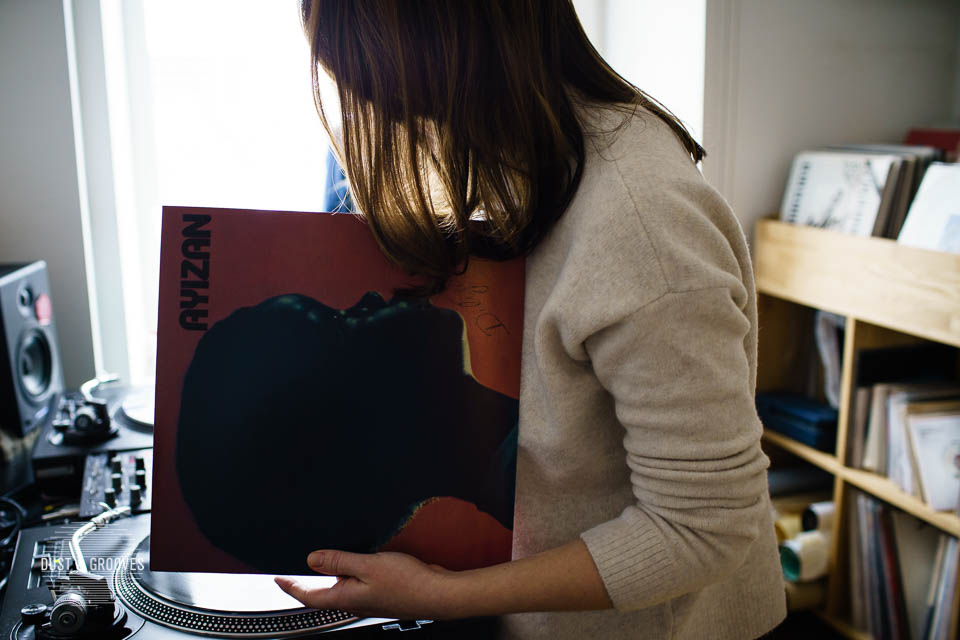
Ayizan Dilijans. One of the more recent records I got, and the whole album is just beautiful. It is a combination of the traditional Haitian rhythms (rara and compa, drumming “in the Vodou style”) with American jazz influences; led by the Haiti-born multi-instrumentalist Alix “Tit” Pascal. Originally released on his own imprint, it was recently reissued by Super Fly records.
It’s hard to overstate how special, and important, David Mancuso and the Loft parties are to the history and culture of the world you are immersed in. The music, the audiophile systems, the way a night evolves, and togetherness and diversity as a defining value. What do the Loft parties mean to you? Where do they stand today? Have they changed since Mancuso’s passing?
J: Our first Loft party in London happened around the same time we started learning about disco and that musical period. Love Saves the Day was given to us by our friend Alex Nikolaev as a New Years gift, and that’s where all this started. We were so amazed and fascinated by the Loft story and Mancuso’s vision for it, so we started researching if there was still a chance to experience it. At the same time we started doing our own party at the Cult Club, and had an opportunity to invite our first guest, Cedric Woo. Long story short, things came together and we ended up in London at the Loft party that was organized by Lucky Cloud Sound System, where Tim and Cedric were members of the crew. All of these things were happening simultaneously—us reading the book, finding out about the party in London, deciding to invite Cedric to DJ at our party. It was all connected. It seemed so unbelievable back then.
The Loft family is very special. There we met Guillaume Chottin who invited us to try and do a show on Deep Frequency. We were lucky to experience firsthand all the preparations that go into a Loft party, from setting up the sound system with meticulousness to collectively putting up the balloons. And of course, we met David Mancuso for the first time.
There are still parties in New York and London. This year it was the 50th anniversary of the first Loft party, which was on February 14, 1970. Since the passing of David in 2016, they’ve been run by people who share and continue David’s vision, by people he trusted and spent time passing on his philosophy. David actually started distancing himself from the musical host role for some years before that. Even though he never intended the Loft to be about him as the center of it all, or centered on the turntables and the person behind them. He would come to the party, and just observe, maybe gently guide here and there. Sometimes he wouldn’t even be there.
In New York, the musical host now is Douglas Sherman, and in London, I believe, it is Colleen ‘Cosmo’ Murphy. The Loft community is very inclusive—people of all ages and backgrounds are welcomed there. The Loft influenced and inspired so many people and parties, and I think it would be fair to say it defined the modern club culture; and I hope that even more people would bring that spirit of love and togetherness with them into what they are doing. Responsibility and respect, that was David’s priority to his guests.
Julia was living in New York, where she had unlimited access to the American soul, disco, house and Brasil records, and I was travelling through Europe, Near East and Asia, looking for new records.
A: I always had a feeling that our first Loft party was one of the main turning points for Javybz. We came back from that trip thinking about our first radio show, and it set us on the path we are still traveling 12 years later.
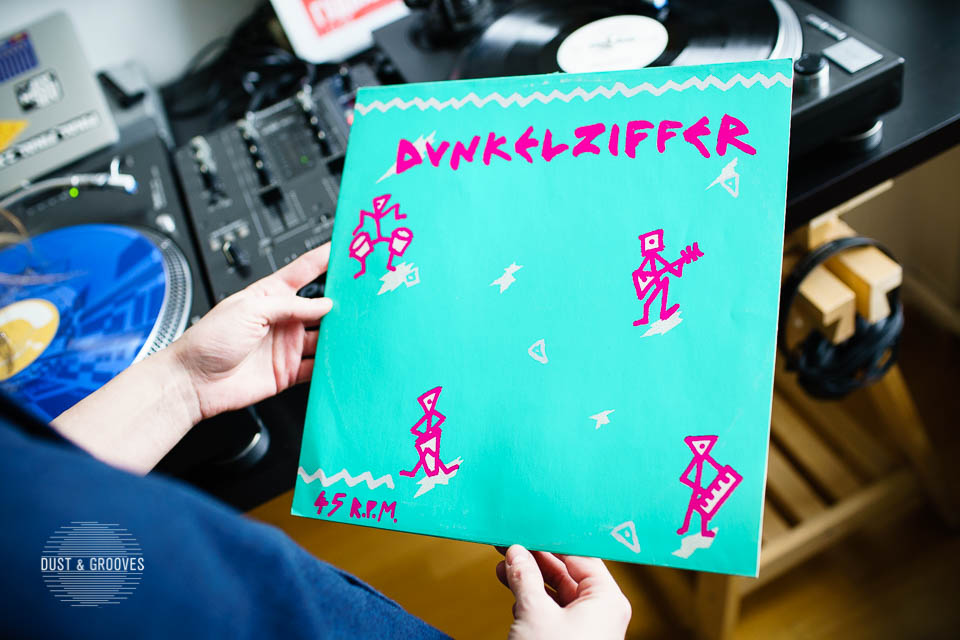
Dunkelziffer Don’t Ask Me 1983. Krautrock band from Cologne, formed out of the members of Phantom Band with an idea that all members had equal rights to composition and decision making. The Record was found at Do Do Beach in Berlin. The track “Don’t Ask Me” is a good wrong speeder and sounds better at 33 RPM. Our favorite one from this record is the post-punk dub track called “Colours and Soul.”
The title of your radio show—All Styles All Smiles—is self-aware and revealing. It describes your purpose and focus. All genres, all parts of the world, all eras. New, old, near and far. Yet, despite it being entirely open and free, there is a strong and consistent aesthetic. Every show is different, but they all have a dreamy, beautiful flow to them. Do you think you have a style or an aesthetic?
A: We definitely have our own way of making radio shows. It comes naturally, we don’t need to invent anything. I would say it’s just a feeling, pure happiness from digging, and the sincere impulse to share All Styles All Smiles philosophy with the rest of the world. Once our friend Sam Floating Points called a record an “All Styles All Smiles kind of record,” and since then we ask ourselves: “Is it an ASAS kind of record?” If yes, we will find the place for it in our playlist. I think we both just feel each other and our radio show very well, it’s like a beloved kid for us, we forgot how to live without monthly shows since 2009. The main idea is to play whatever is on our mind at the time without looking back to genres, styles and BPM. We rarely play the same records twice in our radio shows, almost never. And every month we need 30 new records or tracks, and they can’t be something that we will be ashamed of two years later. We don’t try to fit our best tracks in one show, usually it’s guided by the mood and intuition. Even if the track is amazing, we can keep it for later. We have a whole life full of radio shows. Sometimes we imagine ourselves making a radio show at the age of 90.
J: The aesthetics of the show happened naturally. It’s simply the reflection of what we are up to at the moment—records, artists, mood, the amount of time, and two sets of ears. We do start with a selection of tunes we happen to be listening to, and then there’s the process of finding that flow that will allow the two hours to make sense. Sometimes records don’t make the cut into that particular show but find their way into the next one, or even into one months/years later. Sometimes just one record can set the mood for the whole show. Guest selections take us on interesting trips and searchings. Recording and working on shows after trips to other countries are also super fun.
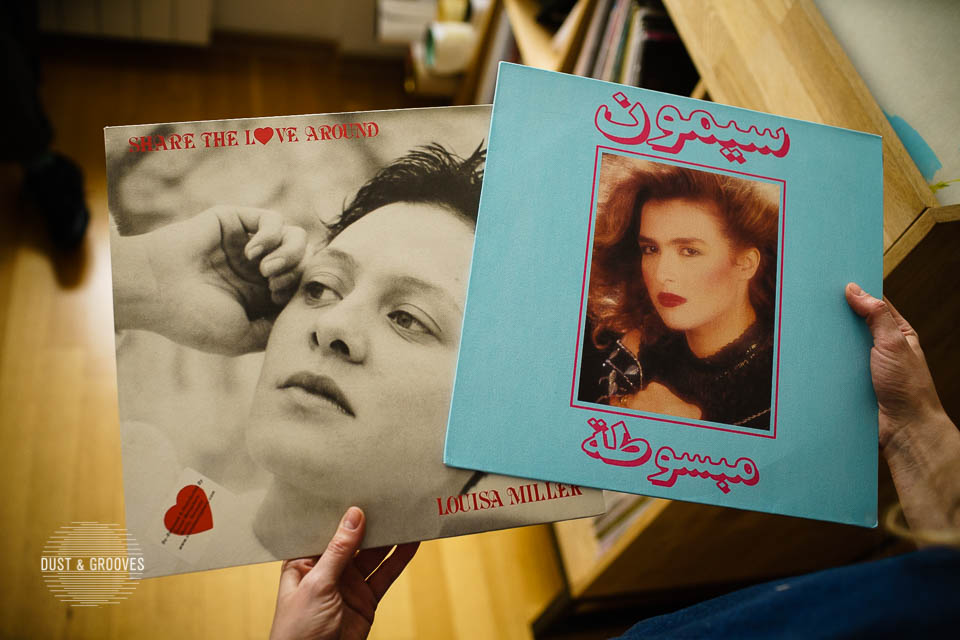
Simone Mabsouta on Thank You 2019 & Louisa Miller / Wing An’ A Prayer Band Share The Love Around on Miss You 2019. Two killer reissues on Thank You and Miss You, two Sound Metaphors sub-labels run by Castro Moore & Nemo Ripoll. I found the Sounds Metaphors record store in Berlin this past October, and fell in love with the vibe in the store, its selection and sub-labels with the very simple and cool naming: Thank You, Miss You, Bless You, Have A Nice Day.
Do you send tracks back and forth until things start to fall into place?
A: We are always sharing our new music with each other and putting it all together in one playlist. Depending on the situation, we can meet at mine or Ju’s place and record the radio show, finding the first track that will set the mood, and going from there. We usually have guests in our radio shows and we are listening to our guest’s mix first and improvising on a theme, inspired by our guest. For example, in our episode with Leroy Burgess, the whole show was 100% about him, our part was a retrospective of his works from the early ’70s to his latest releases. Very often we make radio shows with and feature the music of our friends—young musicians and composers from Moscow, artists like Dima Ustinov, Maria Teriaeva or Lipelis.
J: Some shows happen easily and quickly, others can be rather painful in terms of the amount of time we spend and music we have. Working on shows motivates us to always keep our ears open and actively look for music. It’s a diary of our lives too. That is the main framework. Living in different parts of the world changed the way we work on shows. Early on, when we had just started on Deep Frequency, we would always get together and record the show side by side. Later we created a routine of exchanging the music over the internet (thus adding an extra step of ripping records to be able to share them with each other). There is always some sort of flexible division of labour.
A: Living in different countries didn’t stop us, and in some ways, it even helped by giving us access to a wider music and record universe. Julia was living in New York, where she had unlimited access to the American soul, disco, house and Brazil records, and I was traveling through Europe, Near East and Asia, looking for new records. Our Australian friends showed us a lot of local artists and labels. This worldwide approach and endless research gave us a big picture of the music universe. Every music exchange before an episode of the radio show is like unwrapping a Christmas gift.
You’ve had many guest hosts over the years, and you’ve done different collaborative work with other DJs and record collectors. Sam Shepherd, known as Floating Points, is a close friend and a frequent name popping up in conjunction with Javybz. How did the two of you initially get connected with him? Where have some of your adventures together taken you? Any notable digging moments with him?
J: We met Sam in Brooklyn around 2010, I think, when Anya came to visit me. We had a new episode of the radio show coming up, and one of the songs we played in it was by Floating Points. It was the track “Argonaut” off one of his earlier releases. After recording the episode, we realized that he was playing at the Mister Saturday Night party at the Mercer Hotel in Brooklyn that night, and decided to go. The very next day was the Loft 45th Anniversary Party, and it also happened to be Anya’s birthday, and we went there to celebrate, and again met him.
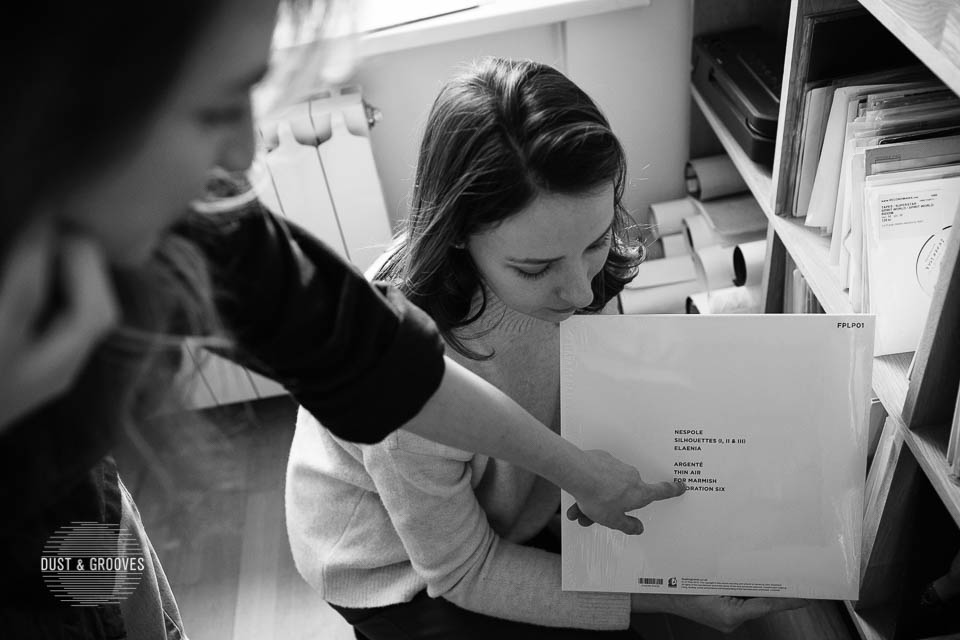
Floating Points Elaenia. Solo debut album by Sam Shepherd aka Floating Points, and a very special record for us featuring the Marmishes theme.
 Sam built a three pendulum harmonograph connected by fiber-optic cables to light sources responding to the music to create the album artwork, also for this insert.
Sam built a three pendulum harmonograph connected by fiber-optic cables to light sources responding to the music to create the album artwork, also for this insert.
A: Since that time we have taken several road trips with Sam. We are always happy to see each other and we’re always thinking about trips we would like to do together. We adore road trips and one of our favorites was in August 2013 when we were traveling through the States, going digging every day in a new city, and Sam played new records on his portable turntable while we were driving. Sam is now a good driver and so it’s his turn to take the wheel and let us play the records.
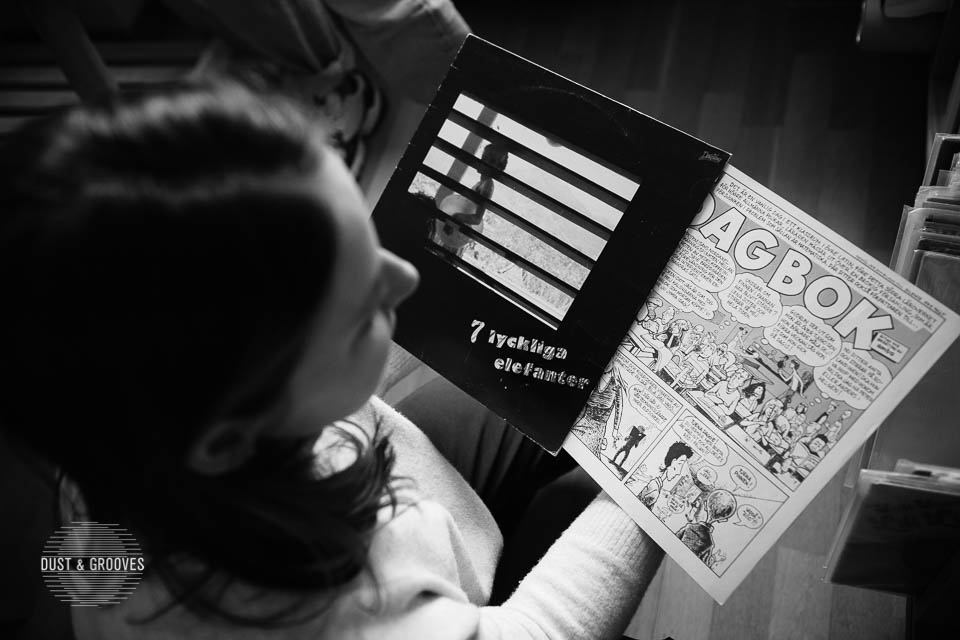
Dag Vag 7 Lyckliga Elefanter. A 1982 album by a Swedish band Dag Vag, has a dub track “Byttebyt” on it and a comics insert. Got it in Stockholm with the help of Tom from Mount Liberation Unlimited on our record digging trip to one of his spots in town while looking for something local. At the same time, I got an ethnographic recording of the traditional Swedish instrument Spilapipa (Shepherd’s pipe), and a story from the store owner with it.
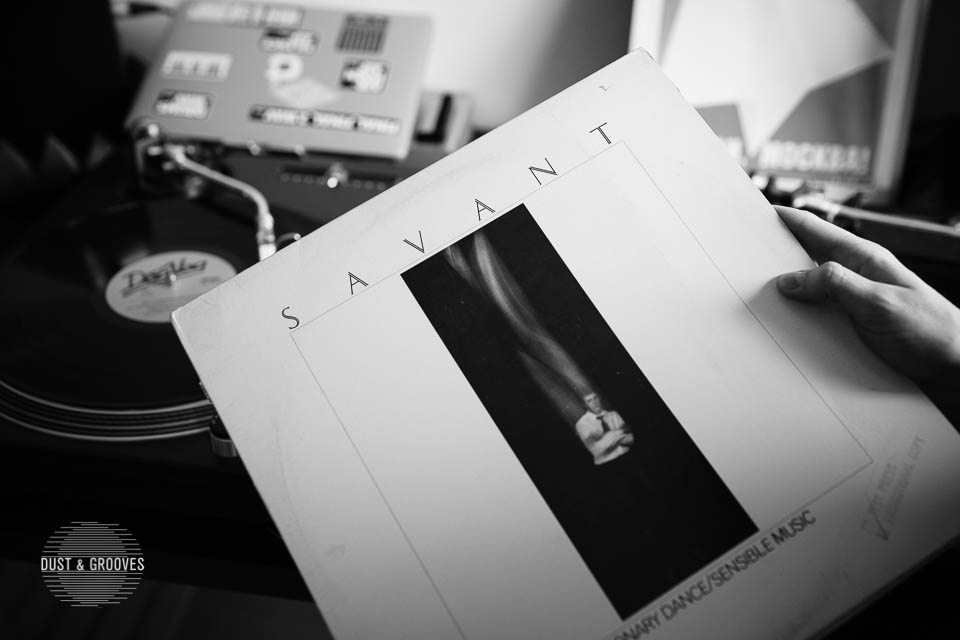
Savant Stationary Dance / Sensible Music. Found at the Utrecht Record Fair, this is one of the two records ever made by Savant, a band created by electronic music pioneer Kerry Leimer and multi-instrumentalist Marc Barreca. In “Stationary Dance” you can hear the loop made from David Tudor’s storytelling from “John Cage Assisted By David Tudor – Variations IV Volume II.”
You have been involved with his reissue label Melodies International, and have had a hand in bringing some hard-to-find albums and singles back into the hands of listeners. What are some standout reissues you are proud of with Melodies International?
J: All Melodies International releases are very special to us. The earlier reissues bring back memories of all the road trips we did together, and of that period when we were discovering those sounds, hearing them for the first time on portable turntables, or at parties. The first one by Aged In Harmony gave the name to the label and to the parties. Sam, Mafalda, Richie (Love On The Run), Darren (Red Greg), Layla and Elliot are all instrumental to the label, and actually the ones who make the things happen. I personally worked on the Jack Jacobs 45 story. Unfortunately, we didn’t get to learn much about that particular 45, but we got to talk to his son and friends, and they shared their memories of Jack. Most of the Melodies releases come with Melozine! There you can read the story of the original 45 copy that inspired the reissue.
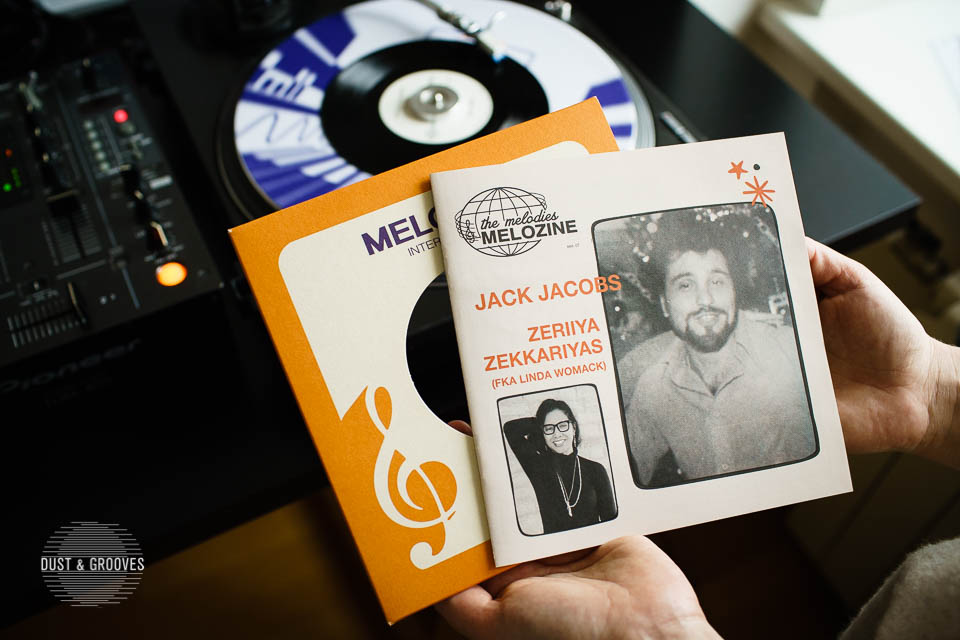
Jack Jacobs I Believe It’s Alright 45 on Melodies International with the Melozine. Sam found the original 45 by Jack Jacobs during one of our digging trips to Philly. While on the way back to New York, we were listening to our finds on the portable turntable connected to the car audio system. I liked it the most, so he gave it to me. That copy then made quite a journey told in full in the Melozine that accompanies this wonderful reissue on Melodies International.
It was one of those magical moments. Other sellers saw him coming and they had to stop me, and when I turned my head and saw this gentleman from the jazz section running toward me with a copy of Steve Kuhn in his hands…it was like a slow-motion scene in a movie. We hugged and everyone around us started to applaud.
What about other friends and collaborators? Who are some of your favorite people to work with? Who would you really love to work with or have on the show?
A: We love to collaborate with musicians and DJs whose music we love and listen to. It doesn’t matter how big and known the artist is, if we love and support his or her work, we would love for them to be our guest on the show. Some of our favorites have been Dima Ustinov, Maria Teriaeva, Lipelis, Odopt, record collectors Timur Omar and Artem Krapivin. We have made three radio shows with Gigi Massin and it looks like that will become a tradition.
I love our guest mixes; they are so different and unpredictable. Arturs Liepins (Domenique Dumont) gave us a very special episode. Also, I love and will be happy to repeat episodes with Floating Points and Hunee, georgian producer Gacha Bakradze, Esa, Andras, Leroy Burgess, Ariel Kalma…there are so many. Our latest collaboration with Laraaji for NTS was something new and special. It was the first time for us when we had an hour-long interview via Zoom with the artist from another corner of the Earth.
It’s hard to choose favorite shows. It’s easier to look ahead and dream about who we’d love to make a show with. Larry Heard, Patrick Adams, Vladimir Ivcovic, Dam Funk, David Byrne, Dima Pantyushin, Nosedrip, Dazion, Ryuichi Sakamoto & Eduard Artemiev, Bullion, Jamie Tiller, Paddy Mcaloon, Ariel Rosenberg, Geoffrey Landers, Antal, Pharoah Sanders, Tim Lawerence…some names sound surreal but I never forbid myself to dream.
J: I would love to add Richie (Love On the Run), Mafalda, the Melodies crew. And then there’s Yuki & Kamui—sharing music and collaborating with them is always wonderful.
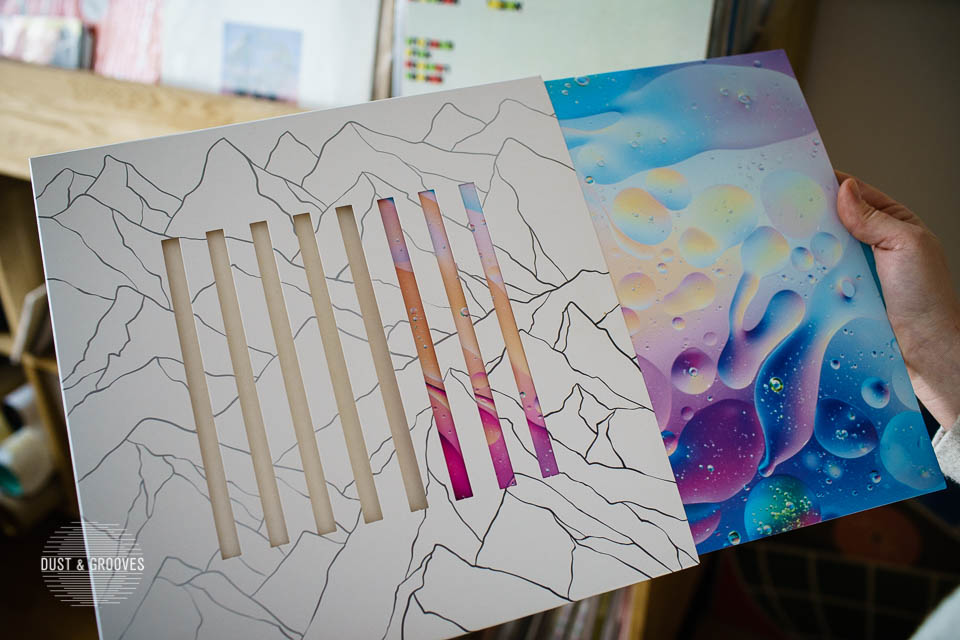
Maria Teriaeva Focus. Solo debut LP from a Moscow-based composer and musician Maria Teriaeva who uses the Buchla synthesizer as a framework for her music, combining it with acoustic instruments and voice. I got the record first from a friend who pressed it at his record plant in Latvia. Later, Maria gave me the missing part, its cover, reproduced by RR Gems Records from Estonia.
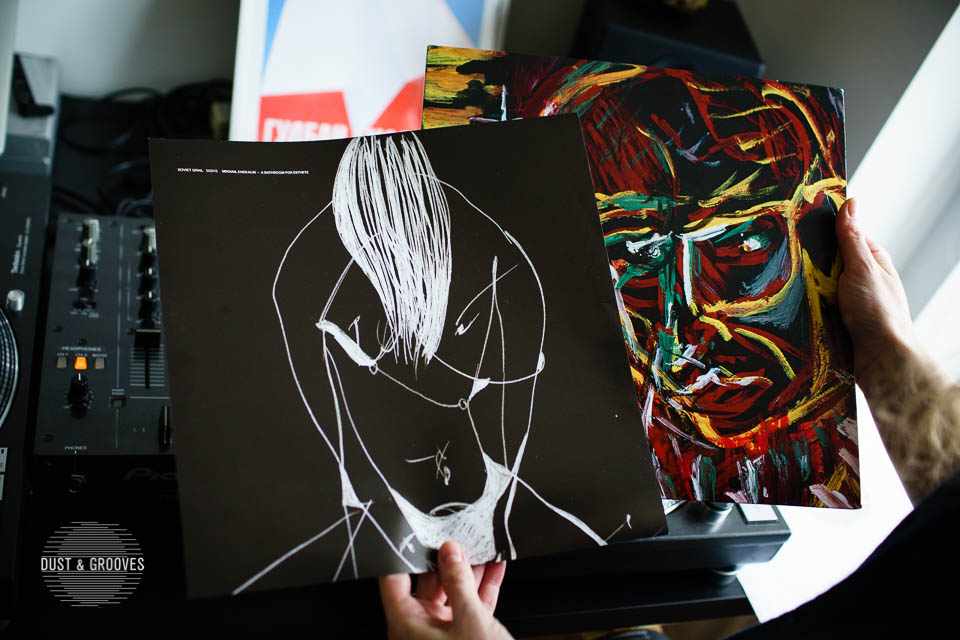
Mikhail Chekalin A Bathroom For Esthete. This is a 2019 compilation on Soviet Grail records. We found this one at the Biit Me record store in Riga last year. There was only one copy available, so we had to flip a coin. Mikhail Chekalin is a Russian experimental musician and composer. There are really great retrospectives of his work on the Russian label Gost-Zvuk.
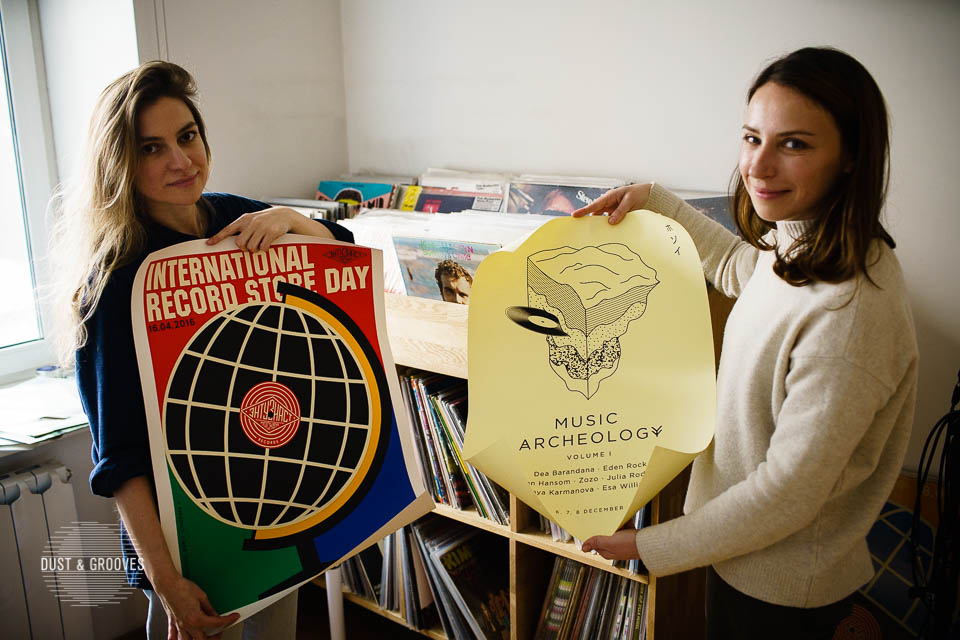
International Record Store Day by Dima Pantyushin for the vinyl market organized by Enthusiast Records at the Enthusiast cafe in Moscow. Music Archeology for the listening sessions project under the same name in Stockholm.
Let’s get back to crate digging. Give us your stories. Your greatest finds, the ones that got away, the unlikely, the memorable. What are some of the stories you keep coming back to? The ones you still can’t believe?
J: For me, the most memorable stories are actually adventures with friends—the road trips and other travels we did together while looking for records. The greatest find is always the record that opens your mind musically, or the one that you can’t stop listening to.
I remember finding the original J. R. Bailey “Just Me ‘N You” in Seattle. I think it was my first dollar bin find. Then there was a record store in Virginia. The owner just got a 45 collection from some record distributor from the ’70s and he had all these unsorted boxes. He let me go through them first, picking anything I wanted for a dollar apiece. That was very exciting! There were some nice mint 45s.
Another memorable moment was when I got to exchange a Skrillex LP for a rare private modern soul EP from Delaware. Thanks to Eilon who negotiated and suggested the deal. This was on the Dust & Grooves trip in 2013. The modern soul EP was on the wall and of no particular interest to the owners while we had some records to giveaway (including the Skrillex LP that we were not sure how to go about). So it ended up being a win-win situation, and my first ‘serious’ record swap; one of my friends started joking that I reached “a new level of record collecting.”
Some stories are not as good. One time, my friend and I got a tip about a record dealer in Philly. It was pretty late when we arrived at his house and after ten minutes or so at his place, we realized that he didn’t have anything we were looking for, and it felt quite embarrassing. We left with just one 45 record by Peter Brown for $2.
I have to say when I did a road trip across the country I was making friends every single day through music and records. That was so unexpected and welcomed. Meeting all these amazing collectors, music people and store owners who would share knowledge and very unique sounds. That was an important educational and mind-opening moment for me. I learned so much. There are so many music scenes and genres. I remember meeting people who were very much into documenting their local music history, and they would share one-of-a-kind recordings and stories, sometimes magazines, posters, video footage, and other unique ephemera.

Roland Und Die »Dadadogs« S/T Biber Records, 1980. “Big Piece – Big Peace” on this record is one my favorite tracks ever, written by Roland Schaeffer, a member of Guru Guru. As with almost all of my krautrock records, it was found at the Utrecht Record Fair, which we try to visit every year.
A: The most memorable stories have happened on our road trips and travels. I believe that “my” record will always find me, and it has proven true many many times. One of the most bright examples involved Steve Kuhn. We were lucky to meet him in person, but it was easier to find him than his 1971 self-titled LP. Finally, after years of searching, I found a copy at Utrecht record fair. After asking every seller about it for two solid days, just when I was ready to leave with only five minutes left before the closing of the fair, a jazz seller tracked me down amidst this huge hangar packed with people, and he had a copy with a handwritten note by Steve on a sleeve. It was one of those magical moments. Other sellers saw him coming and they had to stop me, and when I turned my head and saw this gentleman from the jazz section running toward me with a copy of Steve Kuhn in his hands…it was like a slow-motion scene in a movie. We hugged and everyone around us started to applaud.
J: In hindsight, we’re pretty sure the seller was Mr. Archer, who, some years later, recommended that I get “Peace Piece” by Bill Evans. He is the kindest and nicest gentleman you can ever meet. If he ever sees this, I would like to send him a hug and a big thank you! Hope he is well.
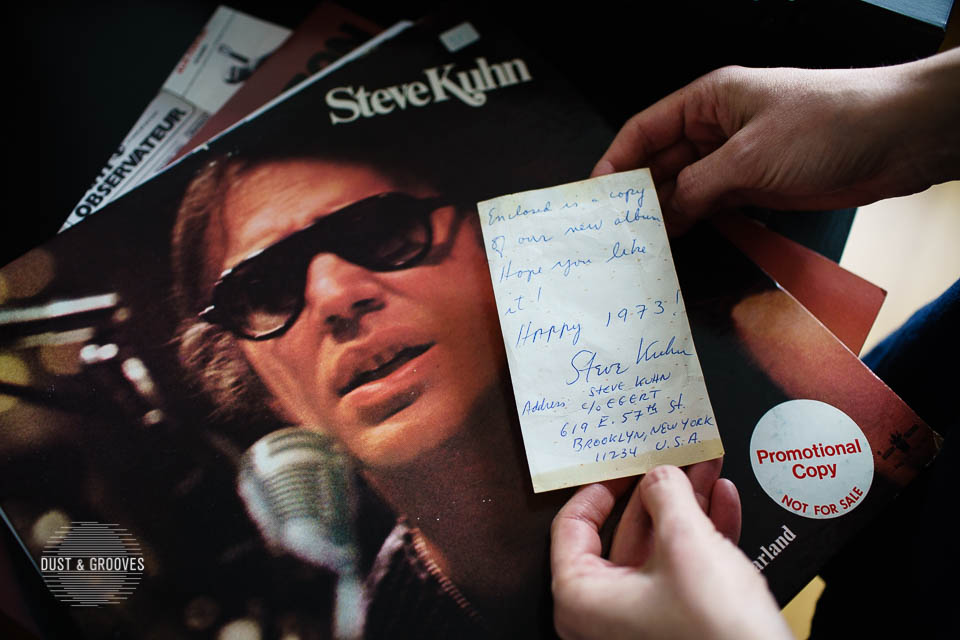
Steve Kuhn, Steve Kuhn on Buddah Records + note. Includes two of our all time favorite compositions, “The Meaning Of Love” and “Time To Go.” It was easier to meet Steve Kuhn in New York in person than to find this record. But this copy was waiting for us at the Utrecht Record fair (including the note, written by the artist in 1973).
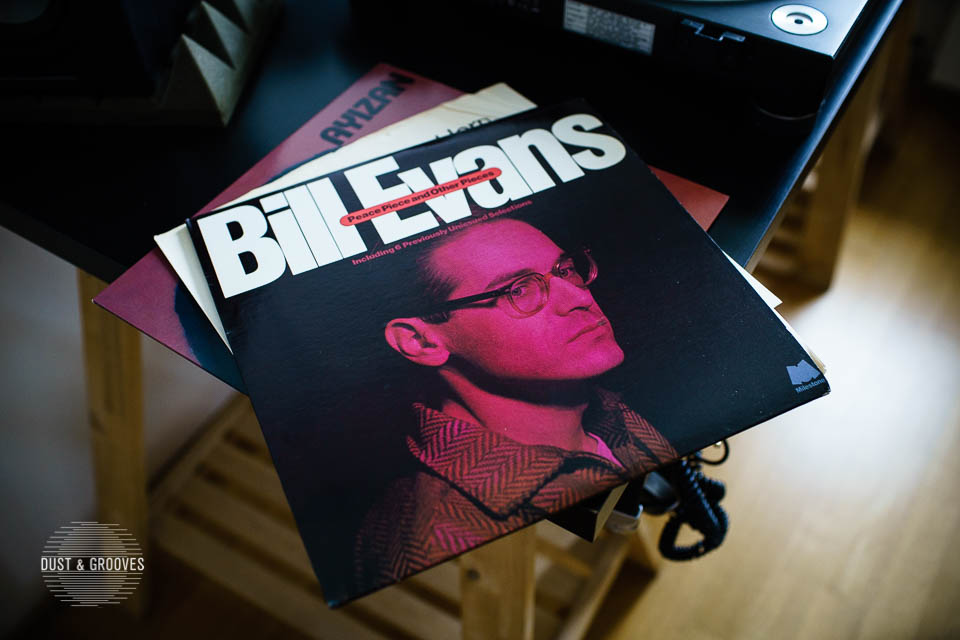
Bill Evans Peace Piece and Other Pieces. I met a wonderful jazz enthusiast and dealer at the Utrecht Record Fair last spring, Mr Archer! While he didn’t have a copy himself, he told me to look for the Peace Piece by Bill Evans, then added he would bring a copy to the next fair just in case. He touched my heart. I did find this compilation album at the final hour of the fair.
Julia, let’s go back to the 2013 Dust & Grooves road trip. I was there for the middle leg of it—Minnesota through the Pacific Northwest and down to LA. One stop that stands out to me was with Mickey MacGowan outside of San Francisco, but we had interesting stops nearly every day. What were some highlights for you?
J: There were so many. Dante Carfagna in Chicago, Andy Noble in Milwaukee, Ira Pandos in New Orleans, the Southern Soul Spinners from LA (Ruben Molina and Arlene Sepulveda), our days off in Indiana were very inspiring and interesting, also visiting the estate sale for the first and only time, which felt kind of uneasy.
Then there was this legend Bob Mays in Detroit. This was my second time at his place. Anya, Sam and I had visited him earlier that same year. Bob Mays used to have a record shop around the 8th Mile for many years and after being forced to close it in the earlier 2000s, he moved the records to his home in Hazel Park. He still has visitors from all over the world. He usually sits in his armchair in the living room chain smoking and letting you do your thing, and if you are lucky he can share some of his poems.
But honestly, we got to meet so many amazing people and see so many amazing places on that trip. I could go on and on. Some of them I wouldn’t imagine exist; so much history and knowledge, and at the same so much heart in it. Eddie’s 3 Way in New Orleans and Aikei Pro’s in Holly Springs, Mississippi. Both are institutions and incredible. My music world expanded enormously during those weeks. All the regional music styles and scenes that I never heard of, and so many personal stories. Thanks, Eilon! And thank you, Josiah, for joining us on that trip and sharing that experience.
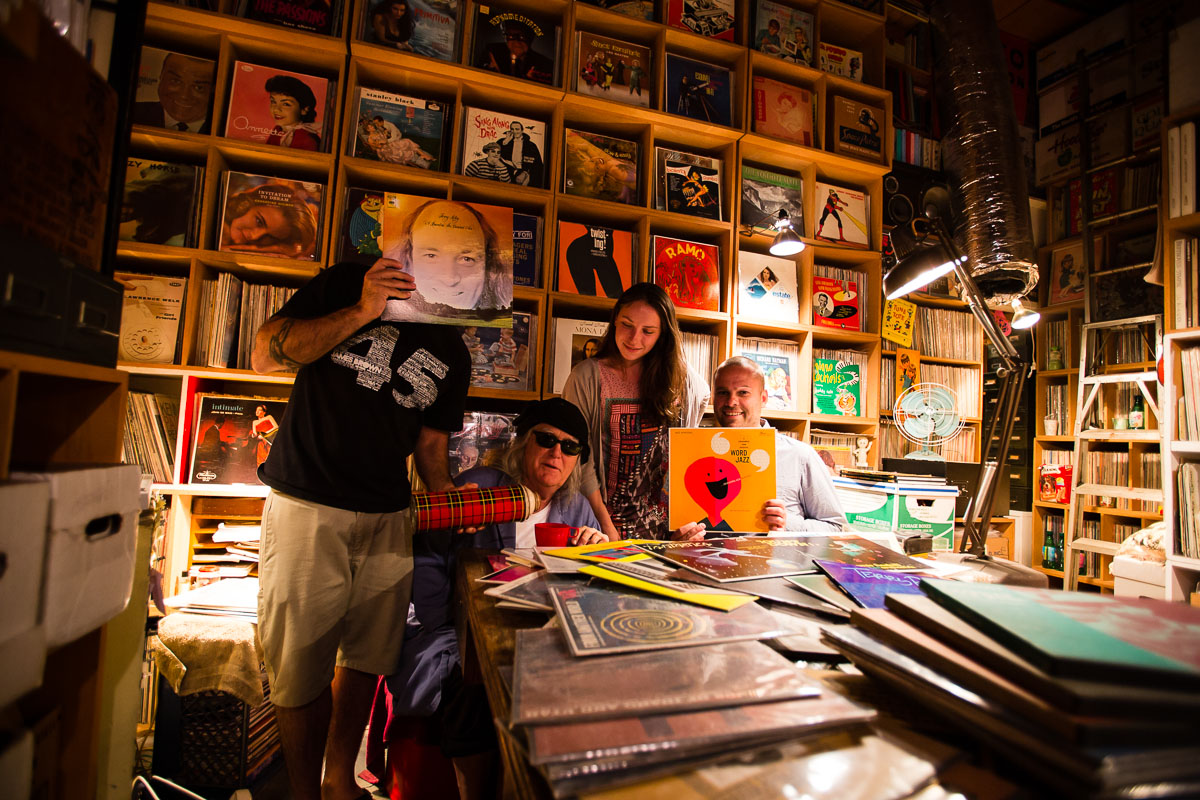 It’s tea time at Mickey’s place.
It’s tea time at Mickey’s place. 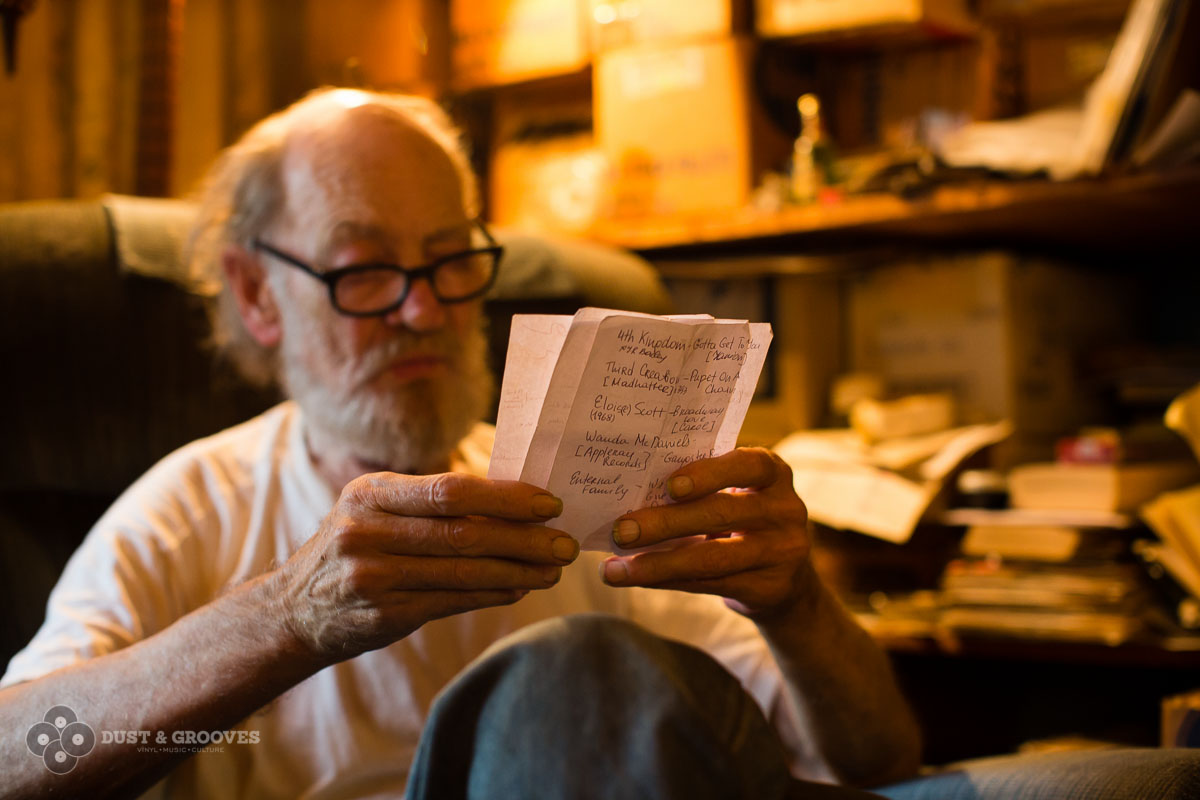 Bob Mayes is studying my ‘wishlist’ for that trip.
Bob Mayes is studying my ‘wishlist’ for that trip.
Tell us more about Eddie’s 3 Way and Aikei Pro’s. What makes them so iconic and special?
When Eddie Sr. first opened Eddie’s 3 Way in the 60s, the shop was selling records, newspapers and shoe shine. That’s how it got its name Eddie’s 3 Way. Later on, they started distributing some NOLA labels and artists; you could still find Eddie Bo stock copies. Eddie Sr. had a brief Soul Train style TV show called “The Outer Limits” on a local station, also a radio show. His son Eddie Jr, in charge of the store in later years, was hit in the neck by a stray bullet making it harder to take care of business. Then the shop was hit by the Katrina and Rita hurricanes. Eventually all the records were moved up to the attic, and visits were by the appointment only. To get there we had to brave climbing the scary extension ladder. And when we got inside, we had to walk on top of the records. It was super weird in the beginning, but there was no other way to be up there. To look for something, you would need to move something out of the way, and there was no light. Luckily, I had a headlamp that my friend Javier wisely gave to me before the trip (he is an amazing collector who digs all over South America). I’ve recently read on the Eddie 3 Way Facebook page that there were plans to re-open the old record shop as a community music center by one of the grandsons.
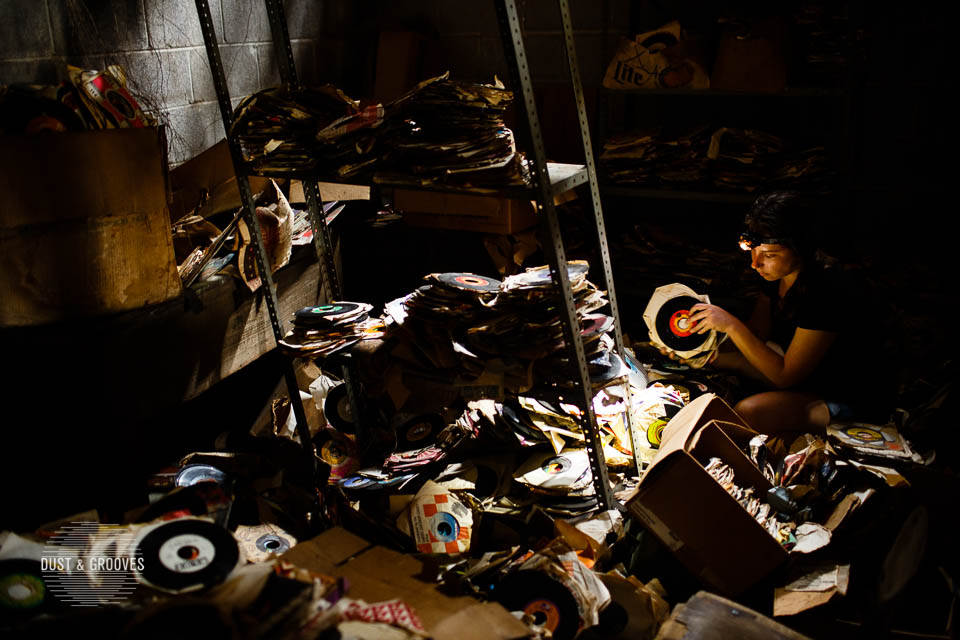 Julia digging at Eddie’s 3 Way.
Julia digging at Eddie’s 3 Way. 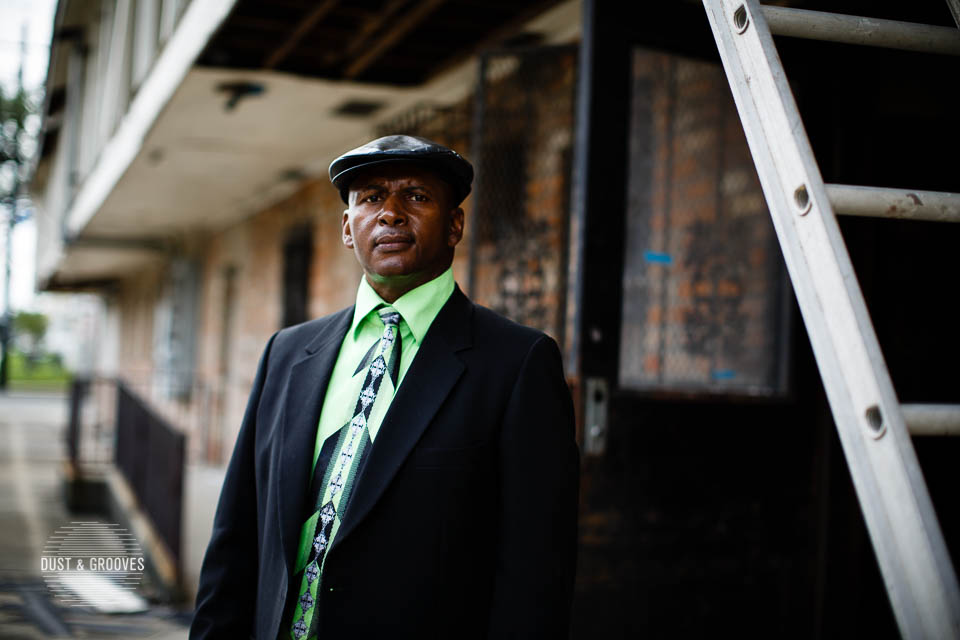 Eddie Jr.
Eddie Jr.
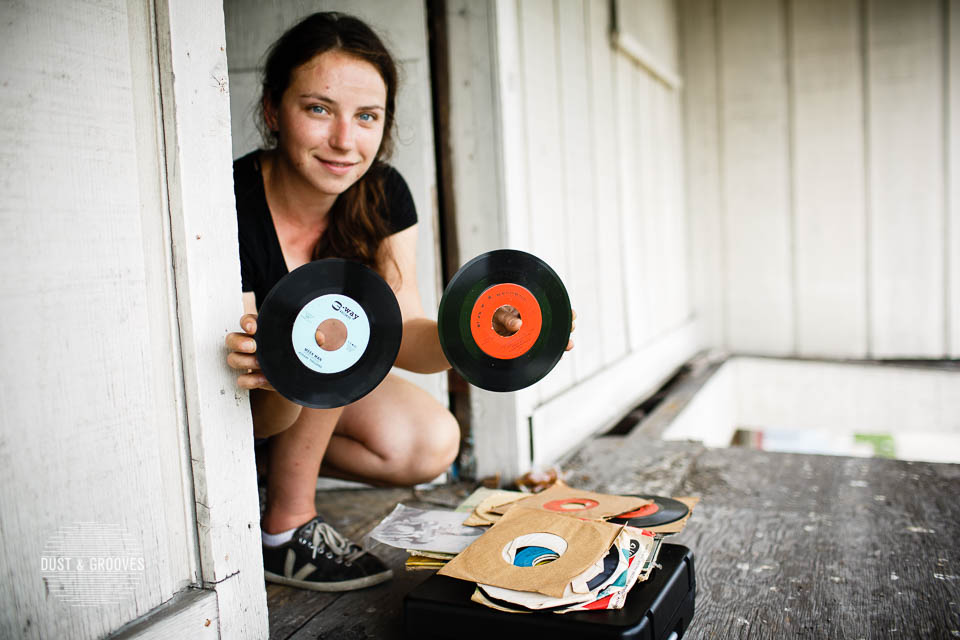
Aikei Pro’s and its owner Mr. Caldwell are other local legends. Located in Holly Springs, the town known among other things for its so-called Hill Country Blues. The originators of the style, R.L. Burnside and Junior Kimbrough, were friends with Mr. Caldwell, who played us some of their records and of course shared stories. Opened in the ’60s in the old car garage, the shop would have a lot of things on sale, including records, which eventually became the main focus/inventory. Walking inside now, you see records everywhere mixed with old electronics and parts, film cartridges, posters and other stuff. Meeting Mr. Caldwell was inspiring. He was born in 1927 and moved to Holly Springs after serving in Germany and Japan in WWII. He was involved in the local Civil Rights movement and championed black-owned businesses; to this day, he keeps looking after the community and cooks at the local church. Aikei Pro’s acts as a sort of gathering place. Mr. Caldwell is very much loved and respected by everyone; people of all ages come to hang out and get advice; some to buy loosies that Mr. Caldwell would sell for 50 cents apiece. International and out of town guests are frequent too. When we arrived, Mr. Caldwell was very welcoming and generous with his time, in the end inviting us for dinner at his local spot, Huddle House. Beautiful ending to that day, and it happened to be Eilon’s birthday.
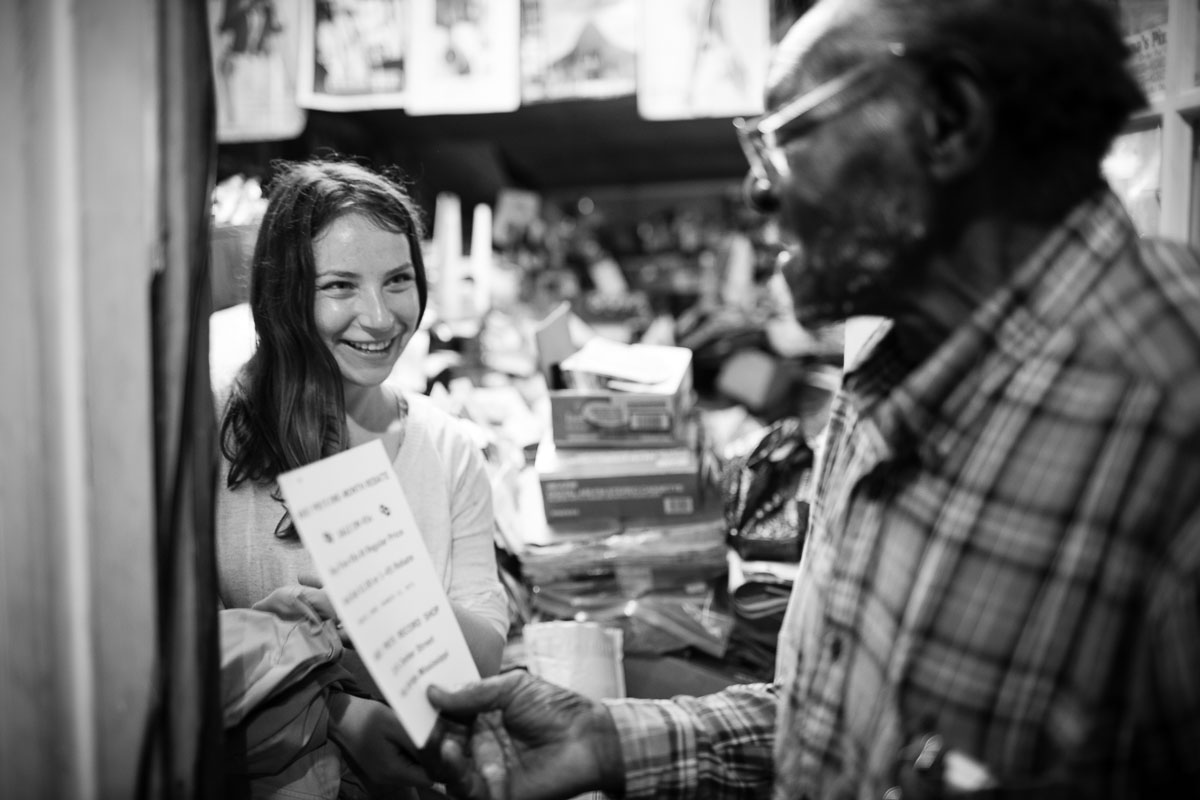
Julia and Mr. Caldwell exchanging notes.
As friends, as Javybz, you wear many hats, including DJing. Tell us about your histories and experiences as DJs. Have there been any “pinch me” moments behind the decks? Any memorable dancefloors?
A: We started to DJ in 2006, and we have always played together. Our first gig was at Cult Club. Shortly after that, we were hosting our parties called All Styles All Smiles. 2008 was the first time we played abroad. It was at a Friends and Family party in London with Black Milk from Slum Village. Those firsts—both at Cult Club and then abroad—were stressful and unbelievable, and we will never forget them.
Then Julia left for NYC and we weren’t able to DJ that often for those five or six years. We sometimes play apart now when one of us can’t be at a gig, but for a long time we played together or not at all.
In the beginning, when we were first learning, we had a very strange way of counting BPMs. One of us would count the beats for the record that was playing while the other one counted beats for the record that was being mixed in. We would see whose count—or hand motion—was faster or slower, and we would try to match the speed of the incoming record accordingly. Then we also learned that you could count beats for 15 seconds and multiply it by four to get the number for beats per minute.
One of my favorite memories was from the most recent Love Potion party in Sweden, where we were playing together for a big audience for the first time after a long pause and in the good company of Esa and Dea. I love our gigs at Enthusiast in Moscow; it’s a good place for experiments and new records.
J: There are so many moments to remember. Our parties at the Cult Club were very special. The joy of sharing and learning together, of counting BPMs for each other; Playing and listening to records side by side is magical.
That being said, DJing is a complicated thing for me, and I wouldn’t identify myself as a DJ now. This was a bit of an issue between us in later years. After we started doing radio shows, also having that period of being apart and not playing for some years, I began realizing that sharing music via radio shows rather than playing at parties is more interesting and fulfilling for me. The radio show is what I want to invest my energy in going forward.
A: There is no separation between our friendship and Javybz. It was mixed into one thing in 2006 and has remained one ever since.
 The debut album by the Puncture band formed by comedians from popular ’80s Israeli radio show. The record includes the track called “Massage Massage,” a killer cover of the “Voyage Voyage” song by Desireless. Found in Tel Aviv by our close friend, Ilya Simonov. It belongs to Ilya, but it’s stuck at my place.
The debut album by the Puncture band formed by comedians from popular ’80s Israeli radio show. The record includes the track called “Massage Massage,” a killer cover of the “Voyage Voyage” song by Desireless. Found in Tel Aviv by our close friend, Ilya Simonov. It belongs to Ilya, but it’s stuck at my place.
Do you have favorite labels? Producers? Years? What have been some of your favorite moments in time in recorded music?
A: I would say that our favorite time frame starts in the ’70s and runs into the present day. We love all kinds of genres, producers and labels. It’s hard to name a favorite because we don’t limit ourselves. We love new small independent labels, sometimes it has only two releases but they are very good. Some examples would be Fri Form, Groovedge, and Sound Metaphors with its reissues on four sublabels: Miss You, Bless You, Thank You, Have a Nice Day. We would highlight Music From Memory run by Jamie Tiller—music choice, storytelling, artists he works with, and the main idea of the label is perfect. Also, Stroom, which is run by Nosedrip. And as Julia said earlier, all Melodies International releases are very special to both of us.
J: There are many influential major and medium size record labels with big productions and artists from the ’60s-’90s. Then there are self-released records and independent labels. This honest, sometimes naive effort—a bit obscure or outsider music—has a lot of interest for me. Many of them are also very inventive, or present interesting takes on something that is popular at that time. These days there are so many good labels that put out new music and amazing reissues too. As for the reissues, I like when they are accompanied by storytelling or put into context. Numero Group are really great at that, Melodies, Music from Memory, Seance Center, Analog Africa, just to name a few. What is also important is that those labels do it officially, find artists if they are lucky or relatives, then some of those releases bring the deserved attention to the music and musicians that were not recognized at the time, and even start a new artistic journey for some.
A: I like to watch projects in development and perceive the whole concept of a particular label with its artists, design, attitude—to look beyond particular releases. For people who are listening to our show, it’s pretty clear that we never stop exploring disco, jazz, soul, reggae, krautrock heritage of the ’70s and ’80s, but we are also deep into new productions, music made by young contemporary producers who are creating music here and now.
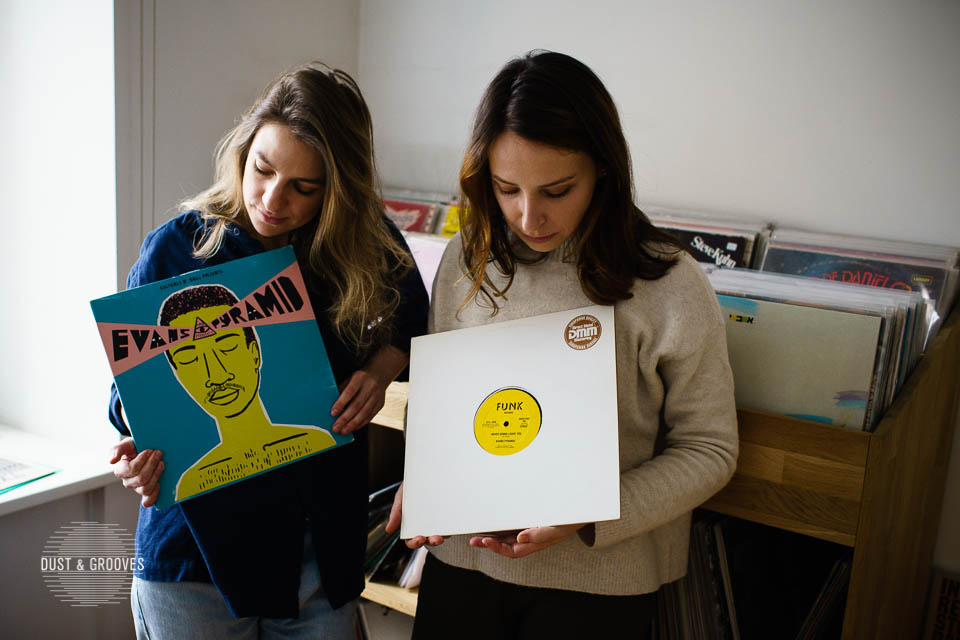 The Evans Pyramid anthology on Cultures of Soul & the original “Never Gonna Leave You” single on Funk Records
The Evans Pyramid anthology on Cultures of Soul & the original “Never Gonna Leave You” single on Funk Records
As Javybz looks to the future, what is on the horizon? What would each of you like to see happen?
A: We joke that we will be making All Styles All Smiles till the age of 90 if we will still have our hearing. It will be cool to improve our radio shows more and more: more interesting guests, stories and beautiful records. I would love to play together in different corners of the world, at festivals. We were thinking about Javybz Japanese tour sometime or maybe Australian tour. We will see!
J: All Styles All Smiles when we’re 90+ would be great, for sure. We recently tried a new format in our show, that was a wonderful experience, and very new to us. The first hour of the show featured our conversation with Beautiful Laraaji, while in the second hour we played a selection of his music. Shaping one hour of an interview out of a few hours, also trying to make it a compelling story, was challenging but something we’re looking forward to. This first time we were extremely lucky with our guest who was so very generous with his time and presence, and is a brilliant storyteller.
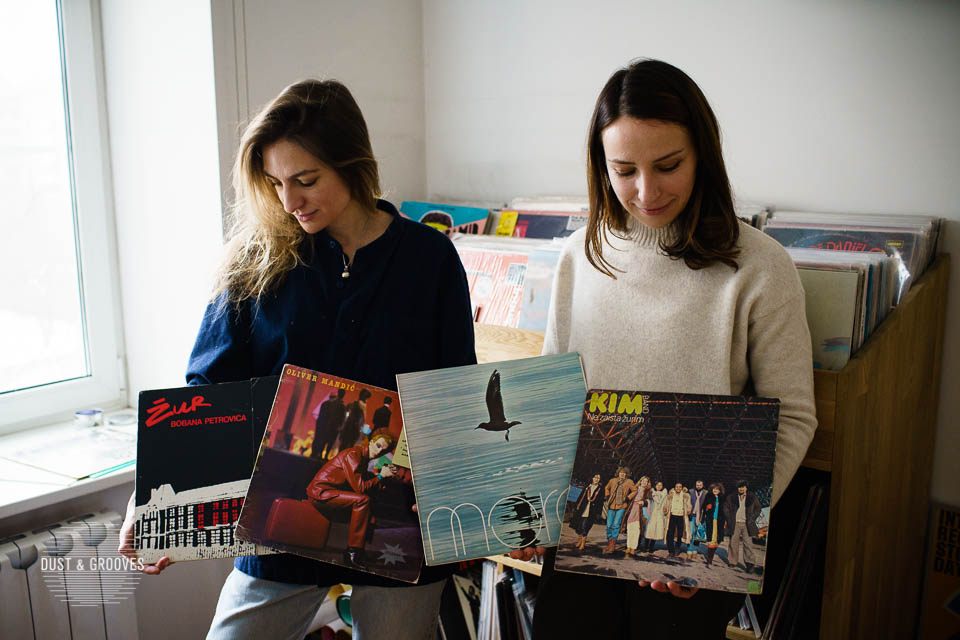 Some Yugoslavian records (left to right): Boban Petrovich, Oliver Mandic, More, Kim Band. These all came from the Yugovinyl store at different times.
Some Yugoslavian records (left to right): Boban Petrovich, Oliver Mandic, More, Kim Band. These all came from the Yugovinyl store at different times.
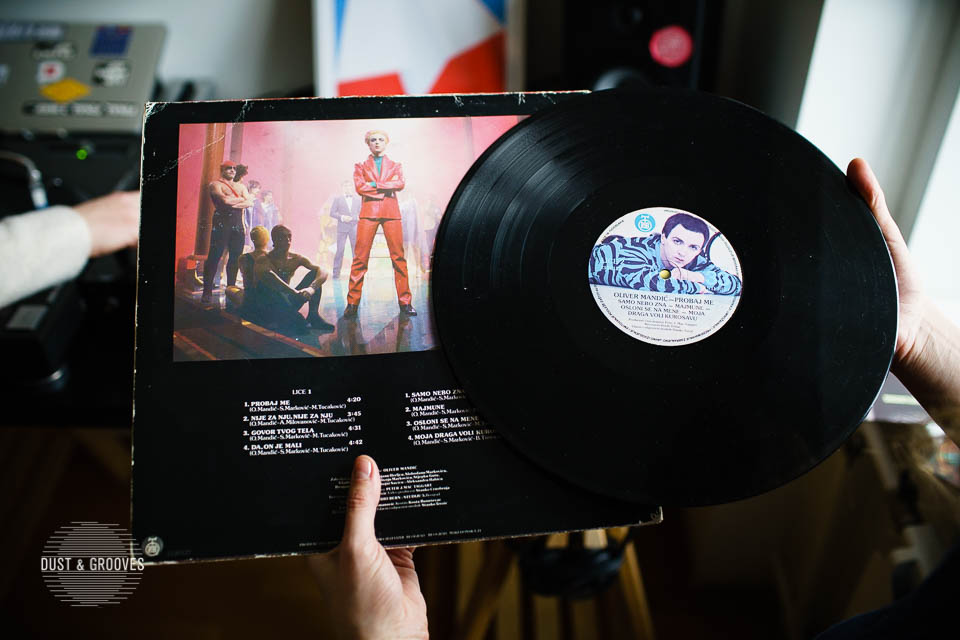
Oliver Mandić Probaj Me. The record was found at the Yugovinyl during a three-hour short connection between flights in Belgrade. Our friend Nenad Markovic was waiting for us at the airport, one of fast digging and some favorite yougoslavian records were found. Oliver Mandić was among them.
I have some rules for how I organize my records. It’s like a diary, every section represents a period of life, or special places and people. I have my New York period, Utrecht Record fair trips, records released by my friends, records I bought in Tropicalia in Furs or during my trips to Asia, and so on.
Tell us about your record collections. What kinds of rules do you have for yourselves as collectors? How are they organized?
J: My record collection for the most part is still in storage in New York, waiting to be shipped to Moscow. I don’t think I have rules as a collector, just enjoying the journey. Records are the best for discovery especially for earlier music. There are a lot of records that got into my collection by the way of research of a new artist or music period, by the look of the cover or label. I do like giving records a chance, and sometimes you have to be guided by visual clues, or familiar names. I guess somewhat it is a reflection of that life and music adventure I’ve been lucky to take part in.
A: I have some rules for how I organize my records. It’s like a diary, every section represents a period of life, or special places and people. I have my New York period, Utrecht Record fair trips, records released by my friends, records I bought in Tropicalia in Furs or during my trips to Asia, and so on. When my friends who are also collectors come to my place and try to understand the logic, I see the perplexity on their faces: why the krautrock record is next to jazz or new age is with Yugoslavian disco. But it doesn’t work for me any other way. I would be searching for a record for ages if I changed the logic.
I try not to make impulsive purchases. For me the choice is easy: if I love the record, I need it. And even if the whole world tells me that I need to have this or that record, I’ll skip it if I don’t feel it. A while ago, I started living a very minimalistic lifestyle. Prefer to have less but the best, and this goes for my records too. I’ve just opened a record store with my friends in Moscow called Enthusiast Records and some of my records moved there.
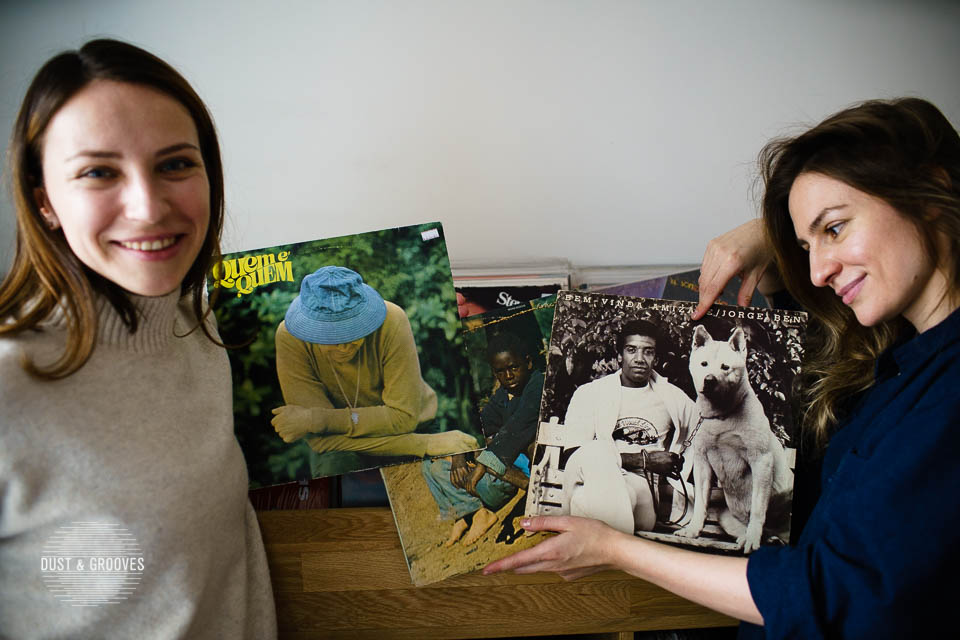
Joao Donato Quem E Quem, Milton Nascimento & Lo Borges Clube Da Esquina, Jorge Ben Bem Vinda Amizande. Some of the great Brazilian records we got from Tropicalia In Furs.

Left to right: Carlos Fire Aguasvivas Eclipse Of The City, The Mercury Band I Can’t Stop My Love, Stroer S/T, The Rationals S/T, William S. Fischer Circles. A selection of records from the several Utrecht Record Fair trips.
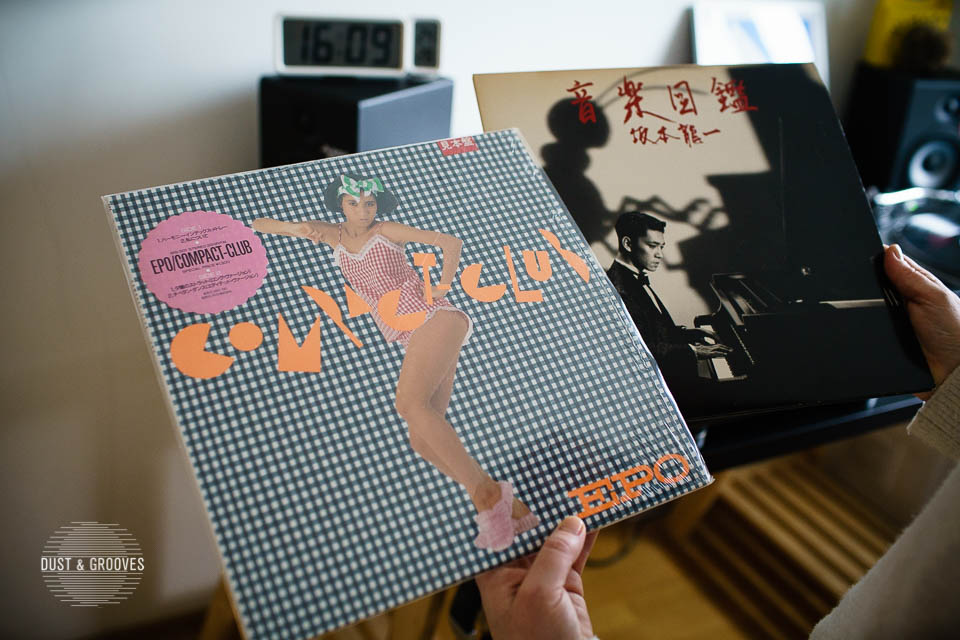
Ryuichi Sakamoto Ongaku Zukan (Music Encyclopedia) & Epo Compact-Club. “Tibetan Dance” original 1984 version by Ryuichi Sakamoto and a version by Epo. Got both of them in Japan, probably at the Revelation Time record store in Osaka. Great shop.
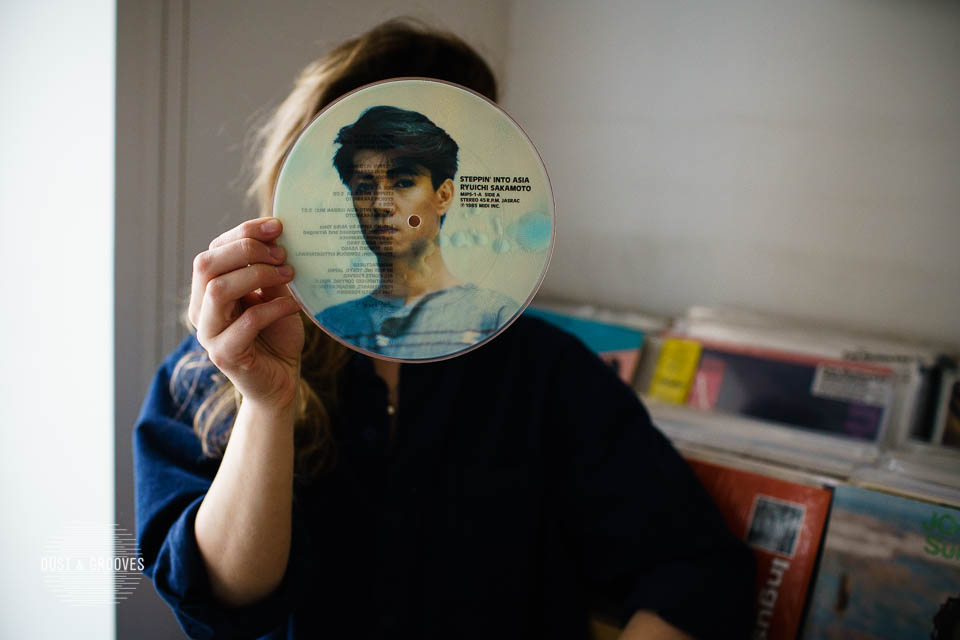
Ryuichi Sakamoto Steppin’ Into Asia. Just love this 7” with young Ryuichi’s pic. Vocals on this record are by Akiko Yano, japanese pop and jazz singer always compared to Kate Bush, Ryuichi Sakamoto’s wife for more than 20 years and a mother of Miu Sakamoto.
Where are you buying records these days? Are you still digging? Do you have favorite shops? Discogs? eBay?
J: Most of the digging now is happening when we’re traveling. We are always trying to check the record shops and meet new people, wherever we go. We still go to record fairs like Utrecht, which is the biggest one in Europe. Bandcamp is also an amazing place to discover music.
A: Unfortunately, we don’t have a lot of record stores in Moscow, but everywhere we go for work or vacation, we always find time for digging, sometimes it takes up all our time. If I had to pick a favorite record store, it would have to be Red Light Records in Amsterdam. I also find a lot of good records at the Utrecht Record Fair too.
What are your deep-down favorite records of all time? Is there one that you just can’t help but love a little more than all the rest?
A: I don’t have a favorite record, or I have too many favorites. A few of the most played records in my life would be: Steve Kuhn, John Martyn’s Sunday’s Child, Takashi Kokubo’s A Dream Sails Out To Sea, Roland Und Die »Dadadogs«, Robert Ashley’s Private Parts, Mark Lockett/Janet Sherbourne’s Slower Than Molasses, The Reels’ Beautiful.
J: Same here. There are too many great and special records; picking just one—or a select few—feels impossible. But if I have to try, I would say that Sonya Spence’s Sings Love is a very special record to me. I heard the track “Let Love Flow On” for the first time in a mix I got on a CD. This was many years ago. The mix was made by Richie called “Love On The Run.” There was no tracklist, so I found Richie on MySpace and asked him about this one. He was very kind and excited to share some facts about the record, and then I moved to New York and we met and are friends forever now.
Steve Kuhn’s self titled album with “The Meaning of Love” and “Time to Go.” Pharoah Sanders’s track “Harvest Time” on Pharoah. Arthur Verocai’s 1972 album and some other recordings he worked on, as well as Milton Nascimento & Lo Borges, Steve Reich, Gill Scott-Heron, Larry Heard, Patrick Adams, countless soul 45s and independent artists who made just one or two recordings. There are so many, the list could go on and on.

Takashi Kokubo A Dream Sails Out To Sea (Get At The Wave) 2018. Japanese ambient, intended to promote a luxury air conditioner line from Japanese electronic giant Sanyo. The album was meant to transport the consumer into a paradise from the heat. Takashi Kokubo is a musician whose music touched all Japanese people because he composed nationwide phone alerts to warn of upcoming earthquakes. We bought this LP at Recordmania in Stockholm while visiting Hosoi for the Music Archeology project.
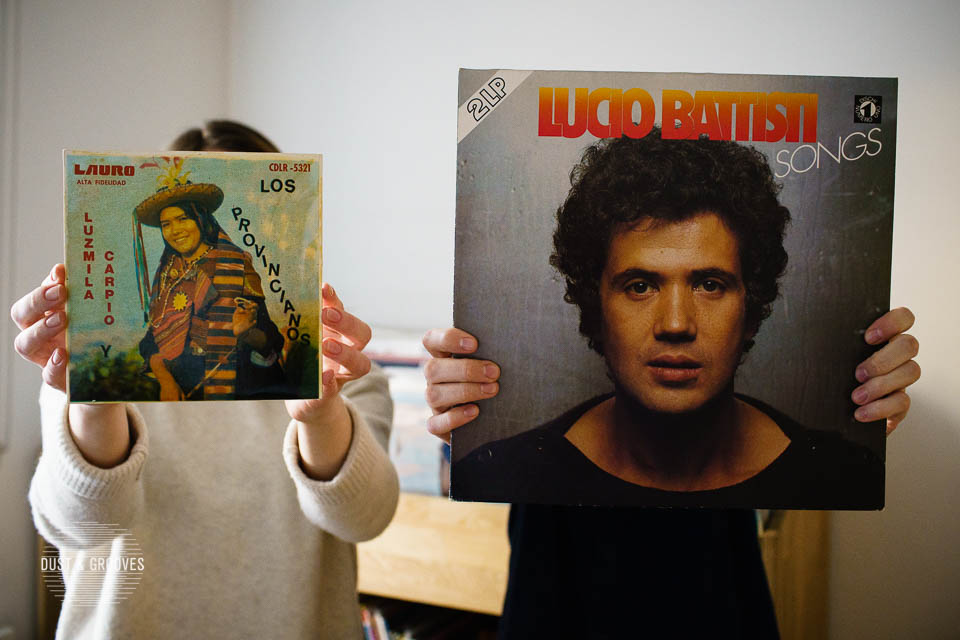
Luzmila Carpio & Los Provincianos 7” & Lucio Battisti Songs. We love almost all records we have in the Javybz collection, no matter who found what, but these two could probably fall into the ‘most hated’ category: Anya doesn’t love Luzmila, Julia can’t listen to Lucio.
What is a record you’ve been searching for forever but still haven’t been able to secure a copy of? What’s the most money you’ve ever spent on a record?
A: I think about the price only at the moment when I buy it and the day after I can completely forget its price. Money was gone, record is here. That being said, I don’t think I’ve ever paid more than €200. Maybe now they cost more on discogs but I have my own internal limiter. It’s more important to know than to possess.
J: I do have a wishlist, but it’s more of a reminder for me to look for them when I’m out in the world. I agree with Anya that it is not about the possession, it’s rather knowing that music is what is important for the both of us. My spending range is about the same. I can see exceptions, though, when you work on a project of sorts and do need that copy, or if it is a gift for a friend that would make her or him happy. Could also be some really unique record that you feel you might never see again, and it is important to make sure it is preserved. I really appreciate the effort of people who are documenting music from their local communities and areas, or particular cultural scenes and traditions. It is an important knowledge that we all benefit from, and helps to tell stories otherwise being untold.
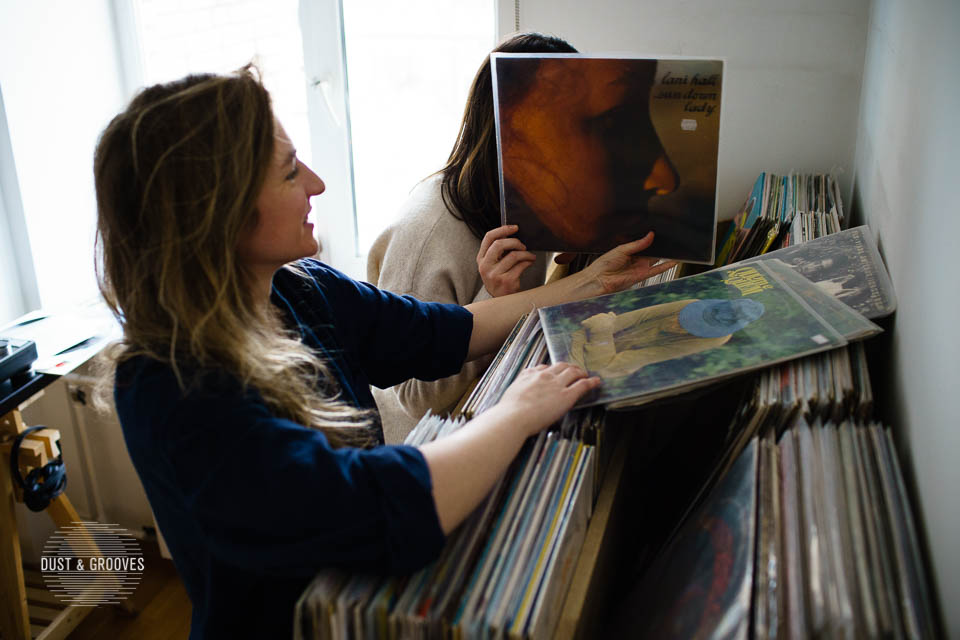
More Javybz:
Is Dust & Grooves a frequent destination for you?
Dig what we’re doing here? Want more interviews and mixes?
A $2 subscription will make Dust & Grooves keep going!
PLEASE SUPPORT US BY BECOMING A DUST & GROOVES PATRON

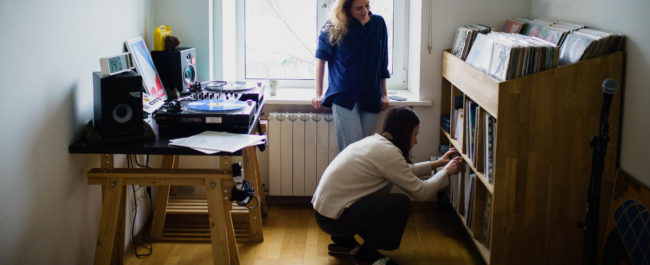

Boban my dude and KIM..black dude from the hood listening to Yugoslavian funk!!!lololol Awesome interview
P.s….they know Mickey’s place awesome always wanted to go there!!